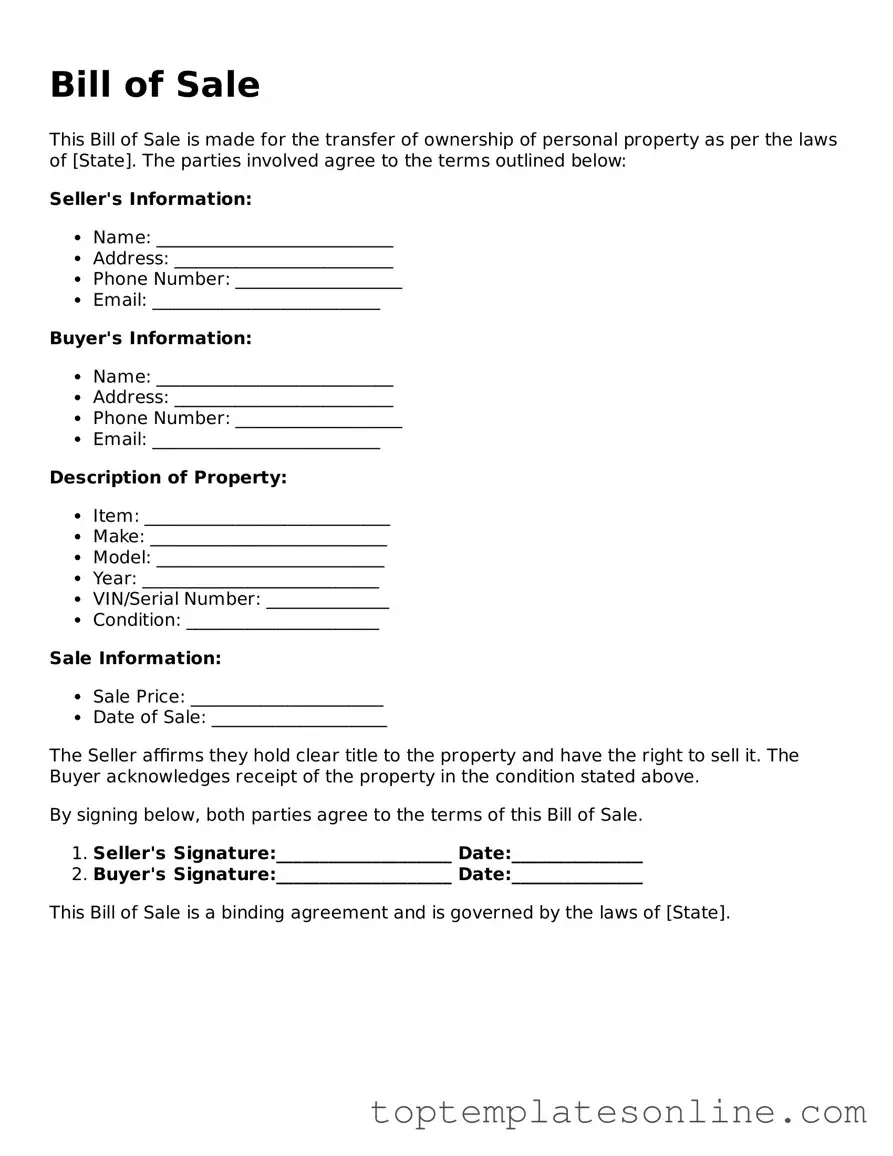The Bill of Sale form serves as a crucial document in the transfer of ownership for various types of personal property, including vehicles, furniture, and equipment. This form not only provides a written record of the transaction but also outlines essential details such as the names and addresses of both the buyer and the seller, a description of the item being sold, and the agreed-upon sale price. Additionally, it often includes information regarding the condition of the item at the time of sale, which can protect both parties in case of disputes later on. By clearly stating the terms of the sale, the Bill of Sale helps to ensure that both parties understand their rights and obligations. In some cases, it may also serve as proof of ownership for the buyer, especially when registering a vehicle or obtaining insurance. Understanding the components and significance of this form is vital for anyone involved in a sale, as it not only formalizes the agreement but also provides a layer of legal protection for both the buyer and the seller.
